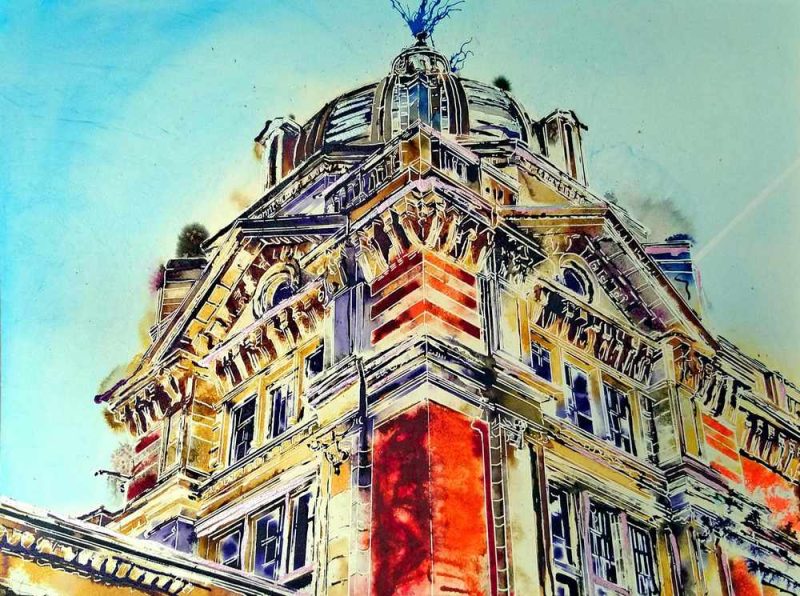How do you to look at Art?
Victoria and Albert Museum - so many decisions?
Decision making is a key component of painting. In the case of the Victoria and Albert Museum painting, that involved deciding on the level of detail. It’s a complex, ornate building, and I could have drawn in every brick. That would have resulted in a more controlled image, but too much masking constrains the flow of ink and results in a duller image, in a less exciting image.
As I look at the finished painting, I’m drawn to all the errors, or rather, the times when the paint has flown away from where I intended it to go. I could have covered these areas with the colour I’d intended them to be later on. But why do that? The unintended effect worked for me. Once I got over the initial frustration.
Painting with watercolour and inks, I’ve learned that my best results are when I allow the capricious nature of the watercolour to come through. Even though I could control the paints, especially the acrylic inks, I choose not to. Using watercolour painting methods. Results in magic, if you allow it.
Does it always work out, no. But then I try something else. Eventually, I have a series of serendipitous events and a result that I usually love.
Finding Inspiration in Architecture
The Victorian Albert Museum is a must see. For the architecture alone, it’s worth a visit, but then there are the exhibitions and its permanent collection. So much to see and so little time. The V and A is such an elaborate building, displaying details upon details. It’s easy to fly past each painting, spending about a minute at each, but then you’ll miss out.
Overwhelming Paintings - How to look at Art
With such a wealth to see, it’s tempting to rush around, trying to see everything. It’s hard to take it all in. So much is lost in the busyness. You look, think I’ve seen it, now what? So you move on.
You see so many paintings that, after 40 minutes your brain is saturated, after an hour or two, you want to leave!
What if I said you don’t have to see it all in one go?
Instead of rushing, you need to slow down.
Overwhelm is an issue for museums and galleries and they’re getting much better and making these experiences easier to digest. These are a few of my suggestions to help you appreciate the art more.
Paintings are usually intended to be viewed individually so, spend time with a single painting. 5-10 minutes is a good start but you can make it longer as you become more comfortable.
Let's try with the Victoria and Albert Museum Painting below
Walk up to your selected painting and, if you feel comfortable, close your eyes for a moment, then open them. Note what attracts your attention the moment you open them.
- If this is uncomfortable, try it with eyes open, it will be less effective.
- If you’re feeling ambitious, and are with a trusted friend / partner, you can get them to lead you to a painting of their choose and note what first attracts you when you open your eyes.

Next, take time to look closely at whatever catches your eye?
Ask yourself questions about the Painting
- What would you hear?
- Where are you?
- Can you smell anything?
- How do you feel?
- Excited?
- Calm?
- Curious?
- Where did the artist stand?
- Imagine standing where they stood. What does it feel like? What do they hear, feel , touch or smell?
- Stand well back what stands out?
- Walk in Close, look at textures, details and shapes.
